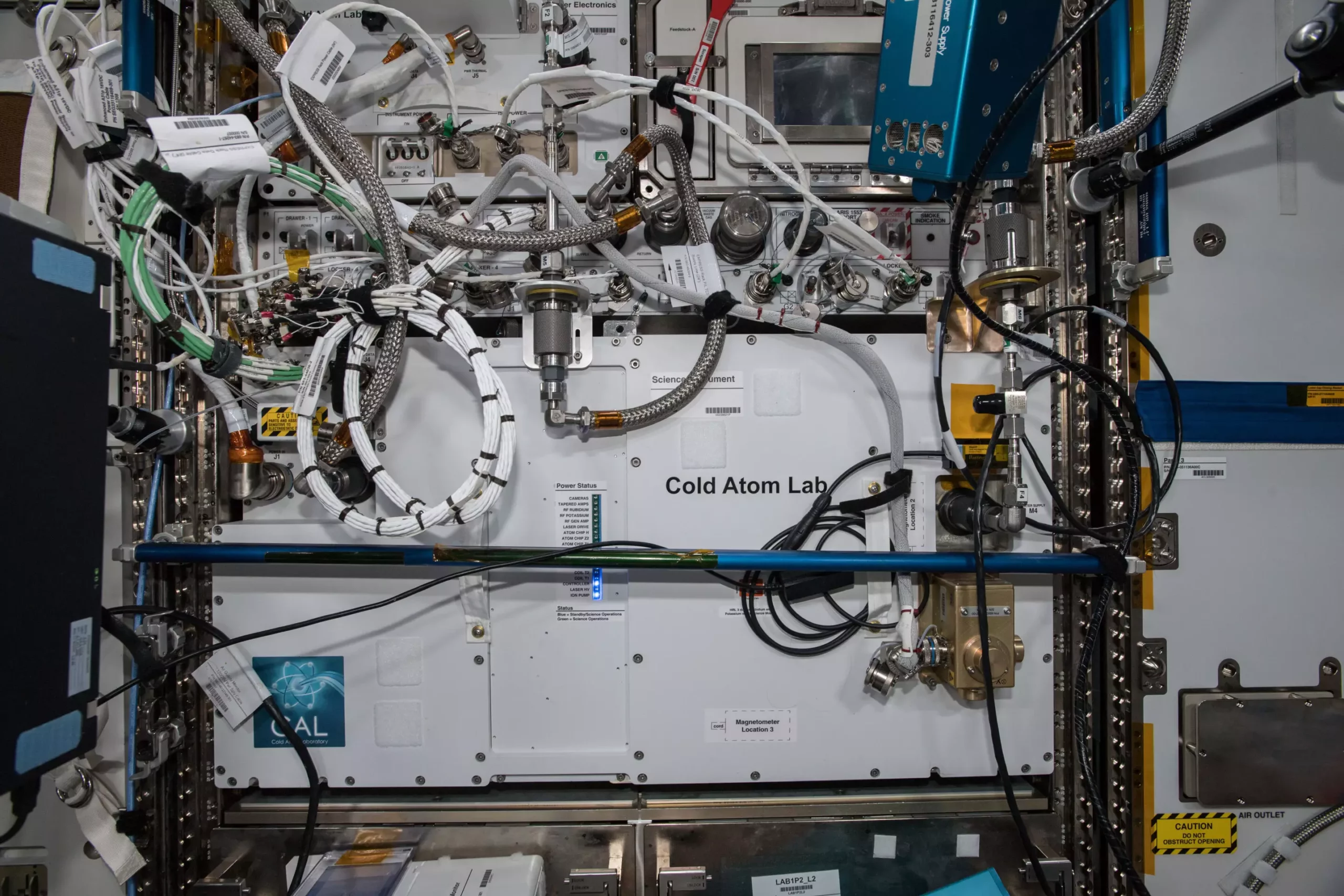The Cold Atom Lab, a groundbreaking facility aboard the International Space Station, has recently taken a significant step towards transforming the way quantum science can be utilized in space. One of the key achievements of the science team behind the lab is the measurement of subtle vibrations of the space station using ultra-cold atoms, marking the first time such atoms have been employed to detect changes in the surrounding environment in space. The study, featured in Nature Communications, also highlights the longest demonstration of the wave-like nature of atoms in freefall in space. With the help of an atom interferometer, the lab’s onboard quantum tool, the team was able to precisely measure gravity, magnetic fields, and other forces in space. This advancement holds immense potential for furthering our understanding of gravity and developing technologies that have real-world applications.
The idea of applying atom interferometry in space has long been of interest to physicists due to the advantages offered by microgravity, such as longer measurement times and increased instrument sensitivity. However, the delicate nature of the equipment had previously posed a significant challenge, as it was believed to be too fragile to function autonomously for extended periods without manual intervention. The Cold Atom Lab has managed to address this concern by demonstrating that it is indeed feasible to operate such sensitive equipment remotely from Earth. This achievement underscores the dedication and ingenuity of the team involved in the project, proving that with persistence and a sense of adventure, groundbreaking milestones can be reached.
Space-based sensors capable of measuring gravity with high precision have a wide range of potential applications that could revolutionize our understanding of the universe. These sensors could be used to investigate the composition of planets and moons, track changes in surface mass, and provide insights into complex cosmological phenomena such as dark matter and dark energy. By enhancing our ability to measure and understand gravity, atom interferometry has the potential to shed light on fundamental mysteries of the universe and test established theories such as Einstein’s general relativity. The Cold Atom Lab’s compact size and innovative design make it a powerful tool for advancing quantum science and exploring the frontiers of space research.
The Cold Atom Lab, roughly the size of a minifridge, was deployed to the space station in 2018 with the goal of advancing quantum science in the unique microgravity environment of low Earth orbit. By cooling atoms to nearly absolute zero temperatures, the lab can create Bose-Einstein condensates, a state of matter in which atoms exhibit collective quantum behavior. This allows researchers to study the macroscopic quantum properties of atoms and investigate the transition between particle-like and wave-like behaviors. In microgravity, Bose-Einstein condensates can reach even colder temperatures and persist for longer durations, providing scientists with unprecedented opportunities for research. The atom interferometer, along with other tools in the facility, enables precise measurements by harnessing the wave-like nature of atoms and offering new insights into quantum phenomena.
As we look ahead, the potential of space-based atom interferometry to drive new discoveries and technologies is undeniably exciting. Collaborative efforts between researchers from the United States and Germany, such as those involved in the Cold Atom Lab project, are poised to shape the future of quantum science in space. By exploring the quantum realm and pushing the boundaries of our understanding, these scientists are paving the way for a quantum future that holds promise for transformative breakthroughs in science and technology. With continued innovation and exploration, the Cold Atom Lab and similar initiatives are poised to usher in a new era of space-based quantum research.


Leave a Reply